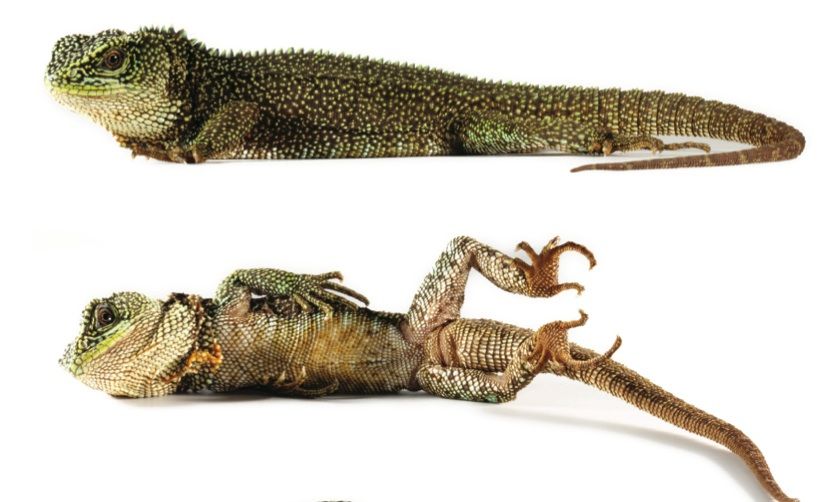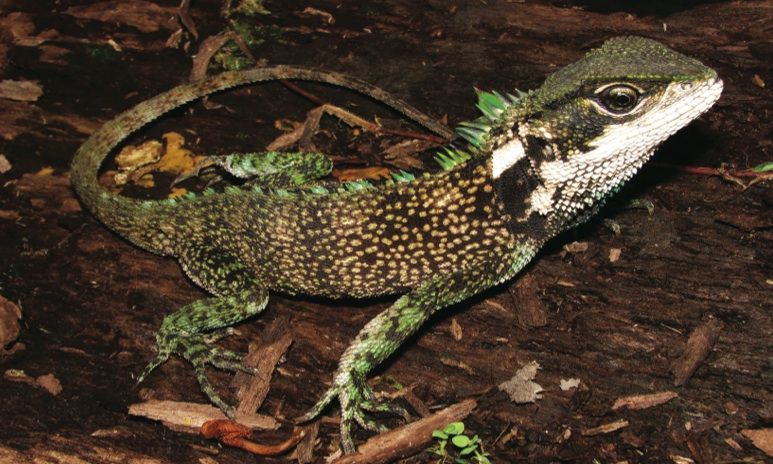New Dwarf Dragons Have Been Found in the Andes
It seems that every time herpetologists wander into the Andean cloud forests, they emerge with colorful lizard species in tow
:focal(540x159:541x160)/https://tf-cmsv2-smithsonianmag-media.s3.amazonaws.com/filer/33/da/33dac002-4f32-4e48-9fde-1836a052e7c9/dragoni.jpg)
Wander deep into the cloud forests of South America, and you might just encounter a dragon. Also known as woodlizards, dwarf dragons are diverse reptiles that come in shocking shades of neon green and bloody red. Some look strikingly like miniature versions of their mythological namesake, with flaming scarlet eyes and armor-like spikes seemingly straight out of a painting of Saint George battling his nemesis.
Now, three newly discovered species join the dragons’ ranks, hailing from a well-known biodiversity hotspot in the Andean cloud forests of Peru and Ecuador. As the lizards’ discoverers report this week in the journal ZooKeys, this raises the current species count for this group to 15.
When Omar Torres-Carvajal began his postdoctoral research at the Smithsonian Institution in 2006, scientists knew of just a handful of dwarf dragon species. Herpetologists considered dwarf dragons to be one of the least diverse groups of South American lizards. But with a few forays into the forest, Torres-Carvajal quickly began proving that assumption wrong. Over the past seven years, he and his colleagues have discovered seven new species in Ecuador and Peru. On this latest collecting trip, they didn’t even have to look particularly hard before crossing paths with intriguing specimens. Scooping up several conspicuous dragons, which are active during the day, they immediately suspected they were on to something.
The first thing the team did was compare those animals’ patterns, body shapes and sizes, eye color and more to attributes of previously collected species. They also compared DNA samples from the unidentified lizards to those in an existing database. These studies convinced the researchers that they did indeed have three new species.
Enyalioides altotambo, the Alto Tambo woodlizard, was their first find. Named for the tiny village in northwestern Ecuador where it was collected, the males of this species have the look of a baby iguana. A female of the same species has a more chameleon-like appearance, with a tubular body and broader, flatter face. The Alto Tambo woodlizards differ from other dwarf dragons in that their scales are smooth and equally sized, rather than the usual hodgepodge of mismatched spikes and disks.
The researchers found Enyalioides anisolepis, the rough-scaled woodlizard, on the forested slopes of the Amazonian Andes in southern Ecuador and northern Peru. E. anisolepis has a more traditional mythical dragon look, with a body and limbs covered in stud-like scales that project outward. The authors note that it comes in three color variations, ranging from black and bright green to brown to burnt orange.

Finally, they introduced Enyalioides sophiarothschildae, the Rothschild’s woodlizard. This scrappy reptile has a slender black-and-brown body tipped with bright green spikes. Its most characteristic feature is its “immaculate white labials and chin”—patches of bright scales around its mouth and neck, like a white-chinned cat.
Almost certainly, these will not be the final additions to the book of South American dwarf dragons, the team says: “Woodlizards are fairly large and conspicuous, so it’s interesting that roughly half of the currently recognized species have been discovered in the last 10 years,” Kevin de Queiroz, Torres-Carvajal’s supervisor at the Smithsonian's National Museum of Natural History, said in an email. “This illustrates how much we still have to learn about South American reptiles.”

/https://tf-cmsv2-smithsonianmag-media.s3.amazonaws.com/accounts/headshot/Rachel-Nuwer-240.jpg)
/https://tf-cmsv2-smithsonianmag-media.s3.amazonaws.com/accounts/headshot/Rachel-Nuwer-240.jpg)